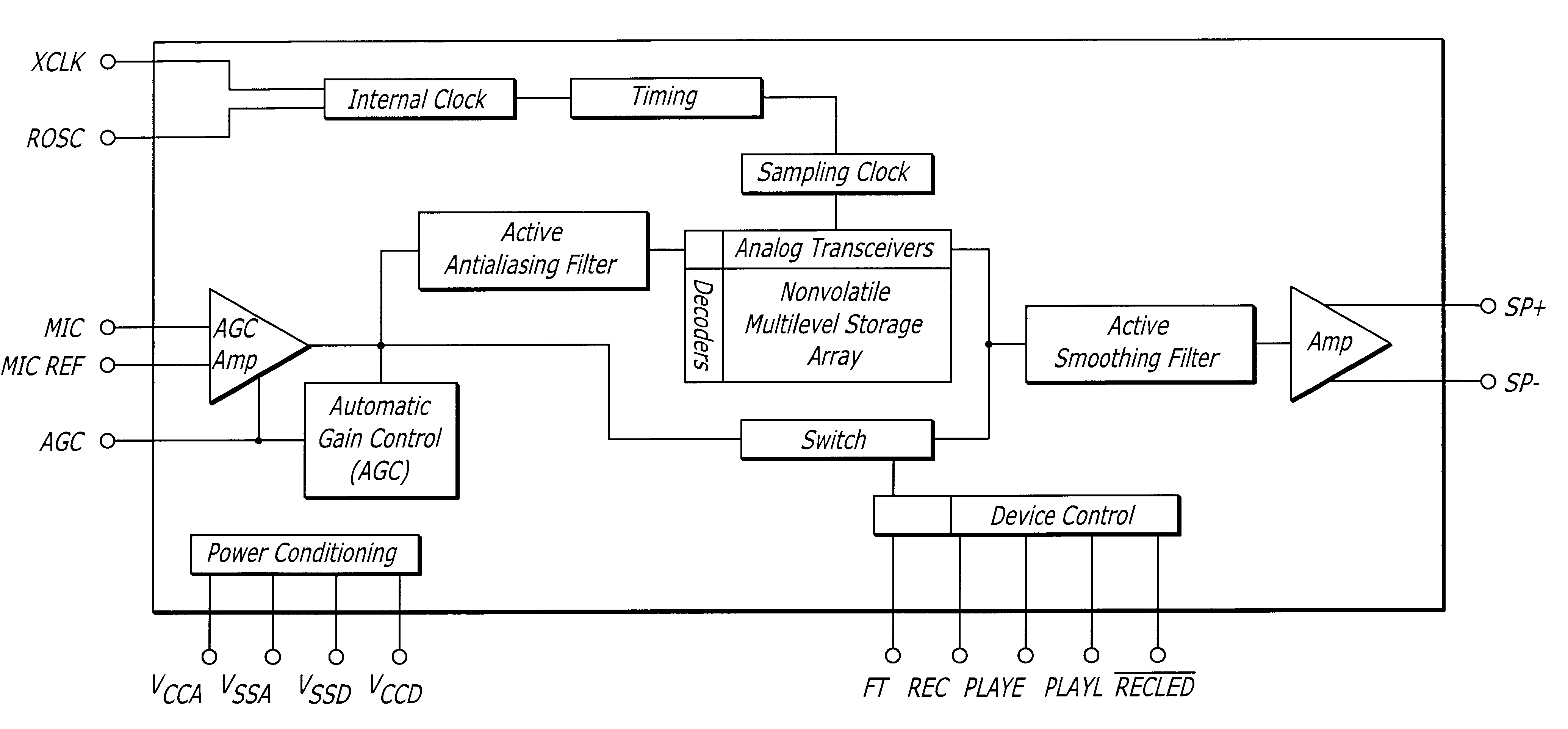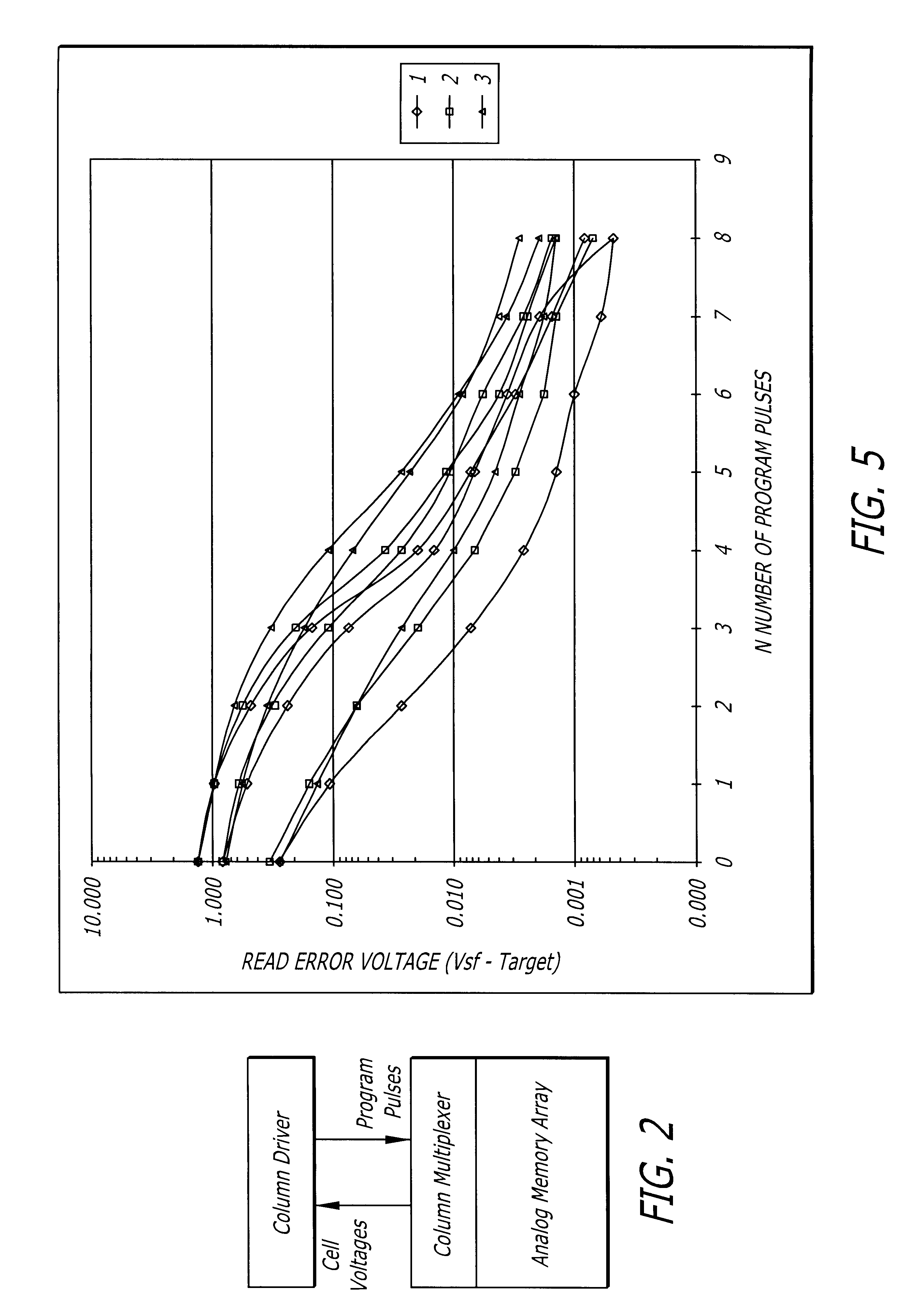Adaptive programming method and apparatus for flash memory analog storage
a programming method and analog storage technology, applied in the field of analog signal storage, can solve the problems of large area and power consumption of circuits and their supporting circuits, many cells have to be programmed in parallel, so as to achieve dramatic increase in voltage
- Summary
- Abstract
- Description
- Claims
- Application Information
AI Technical Summary
Problems solved by technology
Method used
Image
Examples
Embodiment Construction
The exemplary embodiments of the present invention are used in conjunction with the storage of analog information in non-volatile memory. A typical application of the embodiments is for the storage of voice into an array of cells by sampling the analog input signal at a fixed rate and using each cell to store one sample. To restore the signal, the cells are read at the same rate to reconstruct the original analog input signal. The input signal at any time could also represent digital information encoded as one of a predetermined multiple of voltage levels. A representative block diagram of such an analog sample storage system is presented in FIG. 1.
For analog storage in the exemplary embodiments, cells are read in a source follower configuration, as described in U.S. Pat. No. 5,220,531 entitled "Source Follower Storage Cell and Improved Method and Apparatus for Iterative Write for Integrated Circuit Analog Signal Recording and Playback", the disclosure of which is hereby incorporate...
PUM
 Login to View More
Login to View More Abstract
Description
Claims
Application Information
 Login to View More
Login to View More - R&D
- Intellectual Property
- Life Sciences
- Materials
- Tech Scout
- Unparalleled Data Quality
- Higher Quality Content
- 60% Fewer Hallucinations
Browse by: Latest US Patents, China's latest patents, Technical Efficacy Thesaurus, Application Domain, Technology Topic, Popular Technical Reports.
© 2025 PatSnap. All rights reserved.Legal|Privacy policy|Modern Slavery Act Transparency Statement|Sitemap|About US| Contact US: help@patsnap.com



